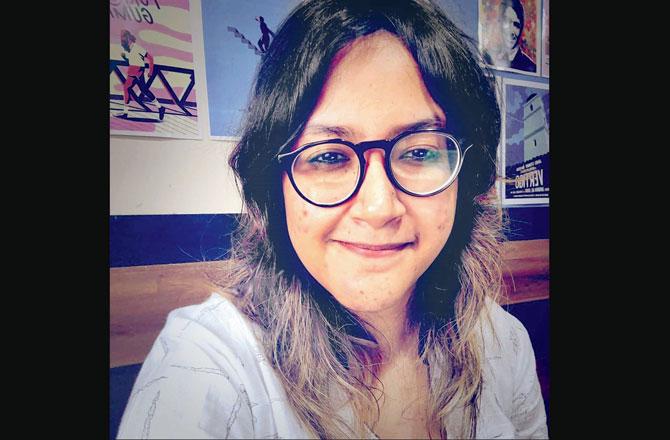As they present same-sex love story in the latest season of Firsts, the team on how Indian entertainment offers a stereotypical representation of the LGBTQ community on screen.

Himika Bose and Shreya Gupto in Firsts
Mainstream representation of same-sex romance has been few and far between with films such as Aligarh (2016), Ek Ladki Ko Dekha Toh Aisa Laga (2019) and Shubh Mangal Zyada Saavdhan being the exception rather than the norm. After two successful seasons, Dice Media returns with an LGBTQIA love track in the third instalment of Firsts. Starring Himika Bose and Shreya Gupto, the story revolves around two girls who match on a dating app and decide to live together to explore their relationship.
ADVERTISEMENT
"The agenda of the show is to normalise same-sex love stories," asserts Gupto. While she took on the role to explore herself as an actor, this is Bose's third outing representing the community. "I played a 14-year-old girl exploring her sexuality in a short story titled Abnormal," recounts Bose. For her latest outing, she took inspiration from friends who belong to the community. "I didn't have any film or book references to play the role, so my character is an amalgamation of people I have seen in life."

Sulagna Chatterjee, writer
Gupto, who made her film debut with Tamil offering Vaaranam Aayiram (2008), credits writer Sulagna Chatterjee for exploring same-sex relationships sensitively. "We personally didn't have to research much because our writer belongs to the LGBTQIA community, and hence, we knew it would be represented accurately."
Love stories is one of the few genres that cuts across age and language barriers, appealing to a wide spectrum of the audience. In showcasing the romance of a same-sex couple, Chatterjee wanted viewers to be more accepting of unique love stories. "Love stories have no target audiences per se. Everyone has the bandwidth to feel love. But, since Dice Media's audience is mainly young adults, the tonality reflected that." Echoing her sentiment, Chatterjee adds, "Even if they weren't homosexual characters, the story would have worked. People connect to the emotions of a character, and not the labels set to them. In our show, Sulagna's friends were happy to see the community represented without being laced with stereotypes."
Where international shows — including Orange is the New Black, Euphoria and Grey's Anatomy, among others — have delved deeper into the subject, Indian content makers are at a nascent stage of exploring these relationships on screen. Ask them if the Indian audience is on the fence despite the Supreme Court's decision in 2018 to decriminalise homosexuality, and Chatterjee states, "Tons of writers are waiting out there with nuanced scripts, but [OTT] platforms need to stop being performative. Most often, we're required to dial down the storylines to make them more palatable or commercial. In the two years since the decriminalisation of Section 377, how many homosexual stories have we seen? Often, characters are made queer only because it gives the creators the tag of being progressive. On other occasions, it's cishet [someone who is both cisgender and heterosexual] people writing queer stories.
How can fresh stories bloom in such a stifling set-up? The question isn't whether India is ready or not; the real question is — how do you find out unless you take that leap of faith?"
Gupto asserts it's high time makers stopped underestimating the audience's intelligence.
"I was part of an LGBTQIA ad, but it got scrapped because the clients thought it would backfire in India. We don't give our audience due credit."
Keep scrolling to read more news
Catch up on all the latest entertainment news and gossip here. Also, download the new mid-day Android and iOS apps.
Mid-Day is now on Telegram. Click here to join our channel (@middayinfomedialtd) and stay updated with the latest news
 Subscribe today by clicking the link and stay updated with the latest news!" Click here!
Subscribe today by clicking the link and stay updated with the latest news!" Click here!






